Noise
ALONG THE MEKONG
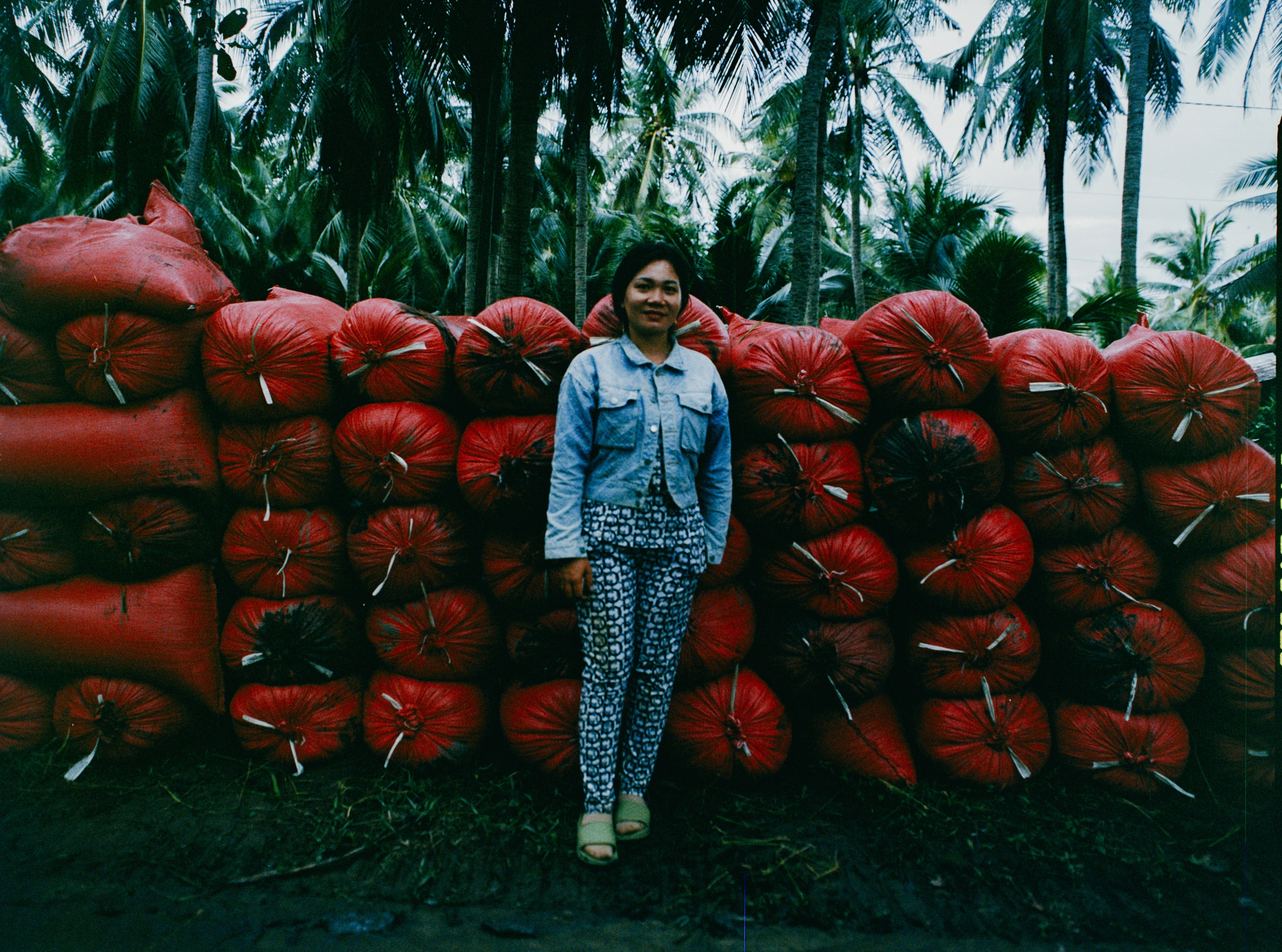
Thanh Xuan stands in front of her rice harvest.
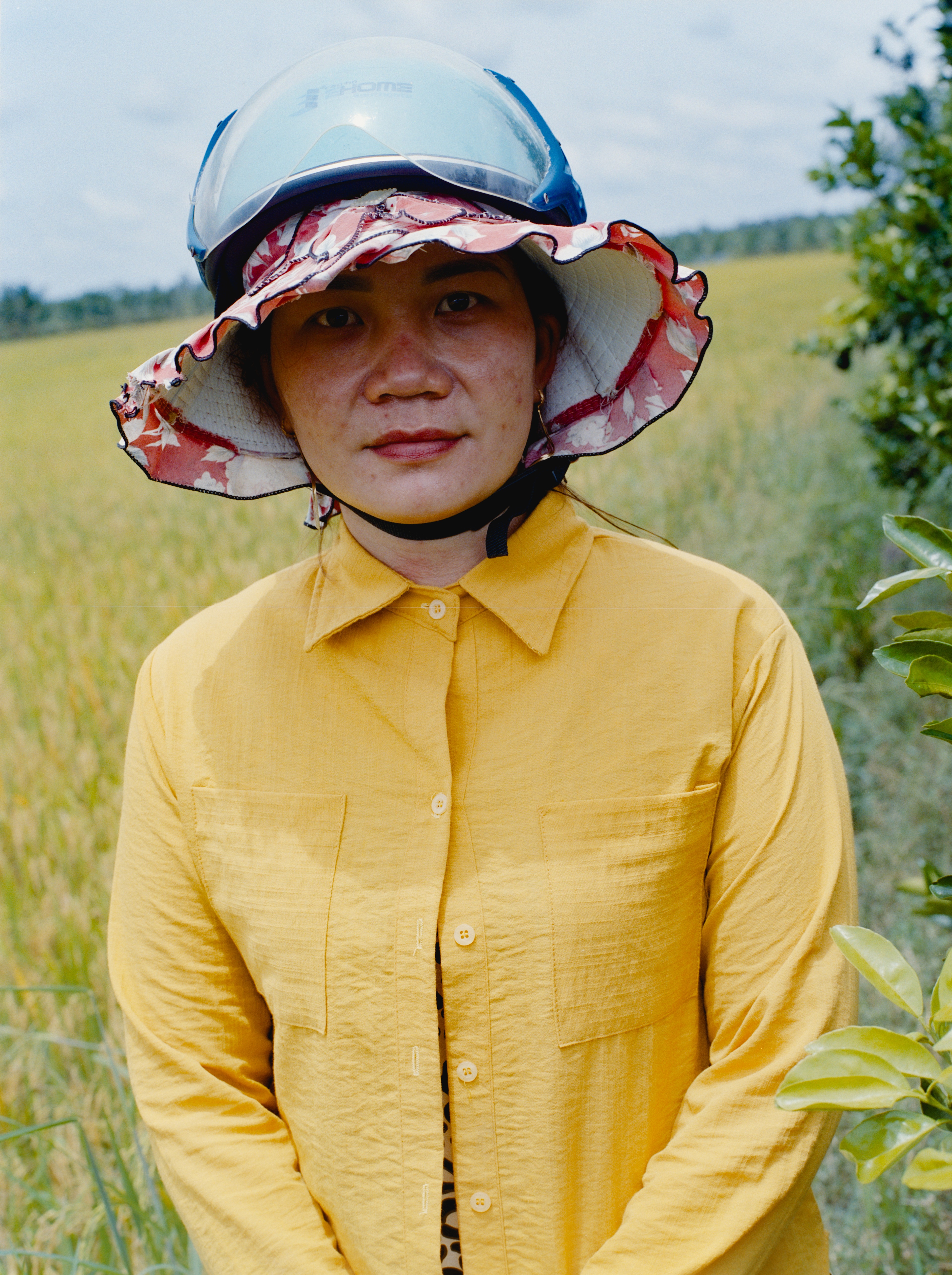
Thanh Xuan in front of the rice fields.
ALONG THE MEKONG
Words: 1243
Estimated reading time: 7M
DOCUMENTING FEMALE FARMERS ALONG VIETNAM'S MEKONG RIVER, WHERE BOUNTIFUL HARVESTS ARE A DANCE WITH NATURE.
By Elinor Kry
In Vietnamese, thanh xuan means “young spring” and refers to early adulthood, or what is believed to be the most fertile period in one’s life for learning, productivity, and personal development.
Thanh Xuan is the wife of my mother’s first cousin, Le Dau Em. They live in the countryside in Vinh Long. Thanh Xuan, 38, plays an important role in the family’s rice farming, making sure the seeds scattered by machines and grown into young shoots are evenly spaced out across the 6,000 square meter plot. She does this by hand. “I enjoy the process very much,” she says. “I get a high from its completion. Afterwards everything is up to nature and my husband’s careful application of fertilizer and pesticides to get us to a fruitful harvest day.”
In the Mekong River Delta, where Thanh Xuan and Le Dau Em live, rice farming is becoming less common. The work is strenuous and the results are unpredictable. A few days too dry or too wet over the critical growing period, and farmers suffer a loss. The only certain harvest is the one that follows Tết, the Lunar New Year, which hopefully makes up for the other two. Rice farming is thus a source of secondary income for most. Le Dau Em delivers propane tanks for his cousin’s company, while Thanh Xuan embroiders garments piecemeal for a local broker.
On his Sundays off, Le Dau Em wakes up early and sprays the fields. Sometimes he sprays and the rain pours immediately afterwards, wiping out his efforts. The growing season takes 90 to 100 days, depending on the type of seed. When the plants flower, the worst thing that can happen is more rain. Yet it is the very marshy and steamy fertile soil of this tropical land that allows rice to grow in the first place. It’s always a dance with nature, but for this particular harvest in mid-June, the couple knew early on there could be problems—they just didn’t know to what degree.
A generation ago, rice farming was a collective endeavor, which made the labor-intensive work manageable. Women were involved in most tasks, including Xuan’s today. Before seeding machines, rice was planted in small parcels and then transplanted to much larger fields, seedling by seedling, all by hand. Girls as young as ten were part of this process, growing up tending to the fields and the water buffaloes.
This is the story of Di Hoa, who lives in a small shack at the entrance to my mother’s property, a few kilometers from Thanh Xuan and Le Dau Em’s rice fields. My mom doesn’t own this plot but has rights to use it, so she threw herself into growing things as if her life depended on it. Di Hoa, having tended to rice fields—as well as cutting coconut for firewood, herding water buffaloes, and endless other agricultural tasks—since she was a young girl, turned out to be the perfect helper in my mom’s agricultural undertakings, from lime and turmeric to hibiscus, dragonfruit, vanilla, jasmine blossoms, and banana trees. Di Hoa negotiates prices for plants; she sources workers; she feeds the chickens and slaughters them; and she prepares a mix of coconut peat and rice husk ash to make fertile soil. As she works with my mom, she grasps the value of the natural things in her environment, for my mom grows things at a scale other people here don’t—not rice or coconuts, but therapeutic flora yet to be harnessed. Di Hoa makes my mom’s work possible with her knowledge of farming and her hard work. As my mom witnesses the environment’s effects on her plants, she tweaks her farming processes, and Di Hoa learns alongside her.
Farming here, as a means of living, is evolving in the countryside—based on people’s ability to master it and adapt to the land’s changes. Women have and will always play a key role in the traditions—and whether these traditions continue may be dependent on how women like Xuan Thanh and Di Hoa tap into economic opportunities that utilize their knowledge and skillsets.
On a sunny afternoon in early May, my mom asked Thanh Xuan and Di Hoa to weed the 90-meter path from her property to the main road, where Di Hoa’s home sits. They completed the task quickly and paused by Di Hoa’s front porch, where some purple yard-long bean vines were climbing up the fence. In a hushed voice, Di Hoa shared with Thanh Xuan, “Last night, some of the beans were stolen.” Thanh Xuan gasped and asked why anyone would steal them. She explained the value of these beans—pest-resistant and quick to flower, and sweeter, crunchier, and of greater nutritional value than the standard green version. “What are you going to do?” Thanh Xuan asked. Di Hoa replied that she didn’t know.
My mom installed a camera by the porch and had Di Hoa collect as many seeds as possible as the plant matured. Di Hoa then furiously planted them, all along the path. By July, the vines had reached the top of the fencing, sprouting heart-shaped purple flowers and hundreds of chopstick-like pairs of baby long beans. When people now ask why she planted so many, Di Hoa just smiles—taking pride in being the master of a locally-prized species.
Thanh Xuan and Di Hoa were not surprised by the beans’ explosive growth. The soil on which they grow comes from the rice paddies. When farmers no longer want to grow on their fields, they sell the soil; my mom purchased truckloads of it to fill the marshes on either side of the path. It’s flushed with water from the Mekong River—so nutrient-rich that farmers prefer it to watering with public supply.
While the river water underlies the fertility of this region, it is the people of the Mekong River Delta who will ultimately decide the reach of its farming potential. Toiling in thick heat and monsoon-driven rains, making enough just to meet expenses, many have little desire or the right resources to experiment. For the women, however, who spend hours talking amongst themselves at home or in service of others, there is an opportunity to introduce new ways of doing things. The first step, perhaps, is to acknowledge their joy—joy that comes from the successful spreading of seeds, be they rice or yard-long beans—harnessing it for the future.

Thanh Xuan and Dau Em.
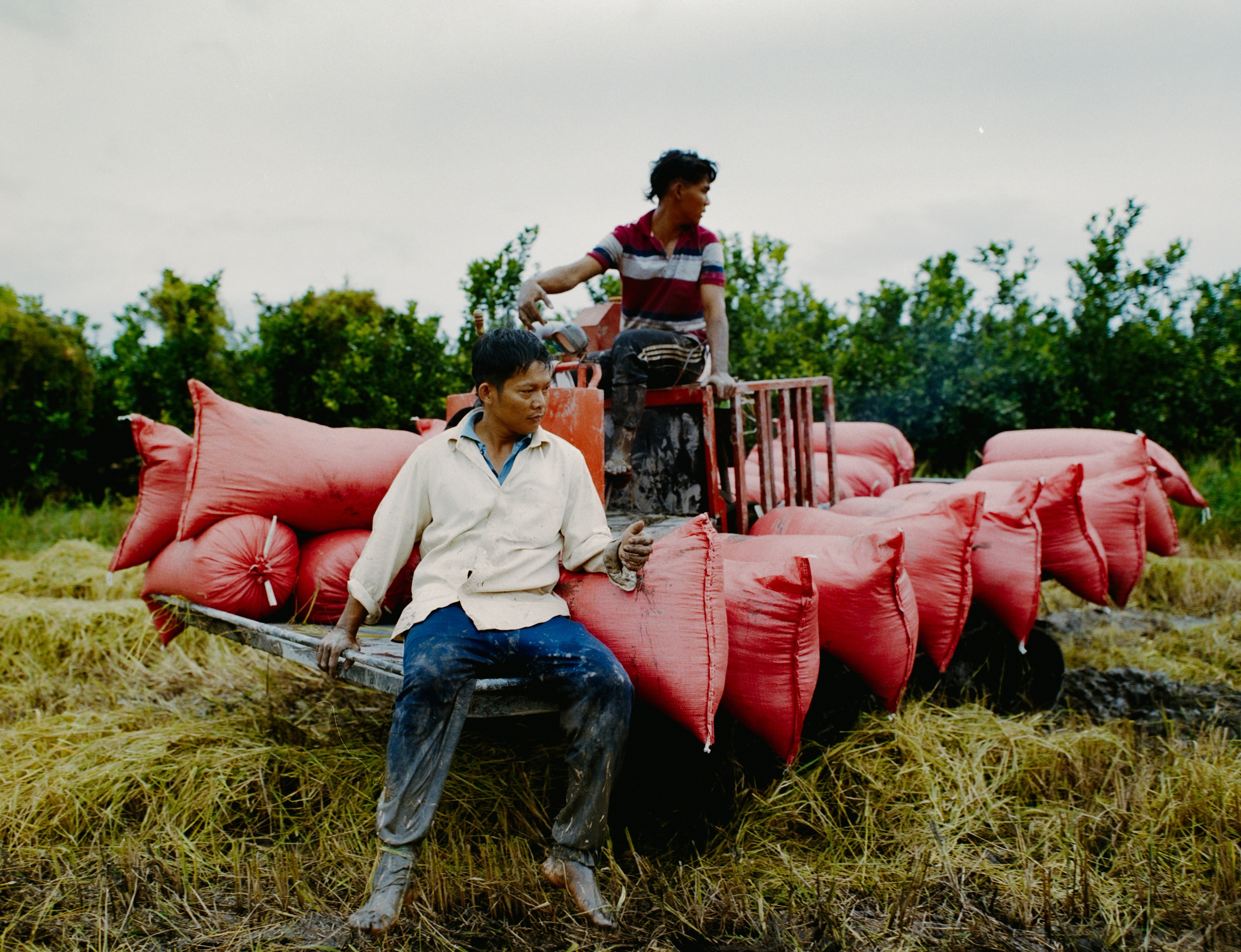
Workers pick up bags filled with rice.

Thanh Xuan holds a chicken my mom bought from her father.
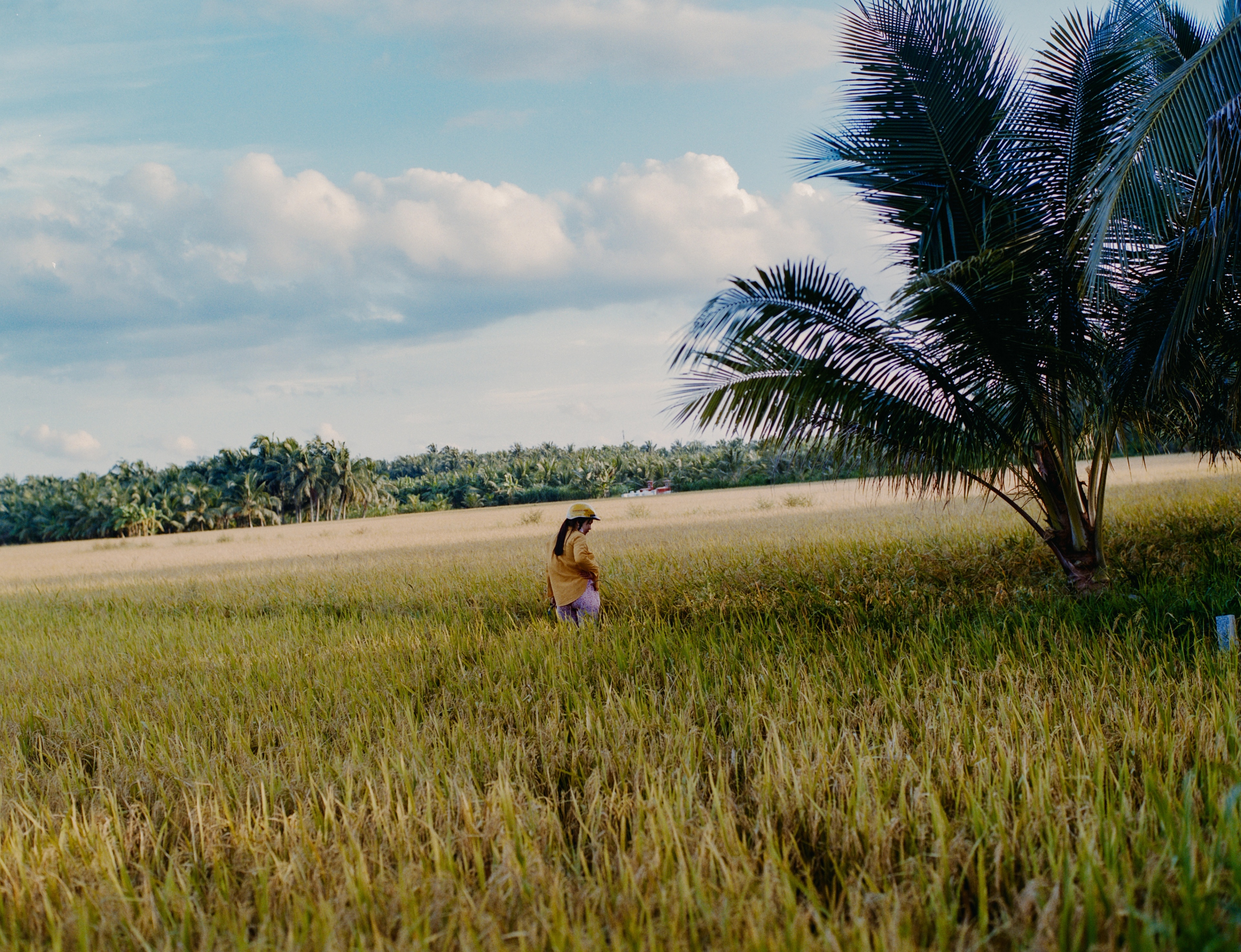
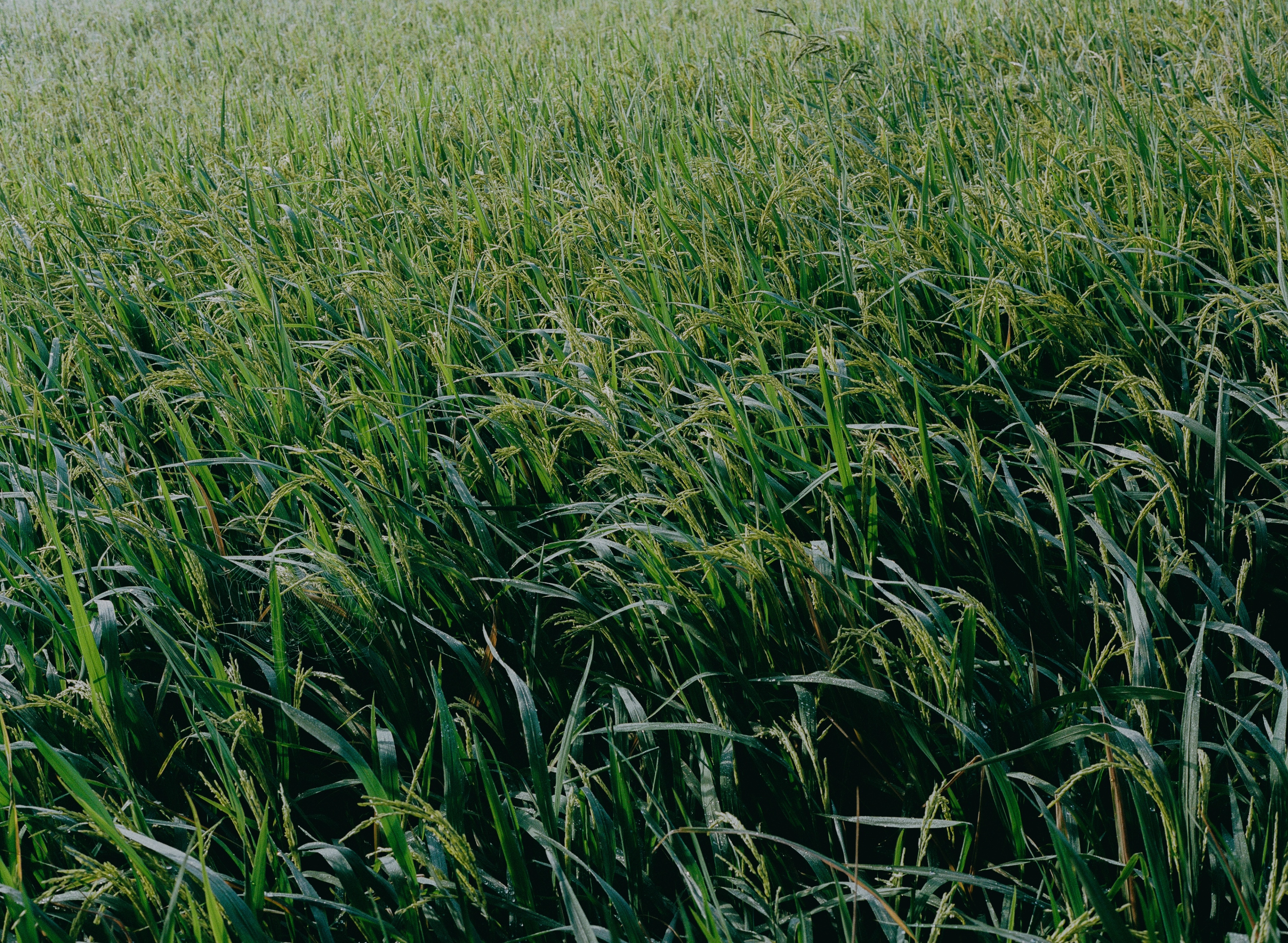
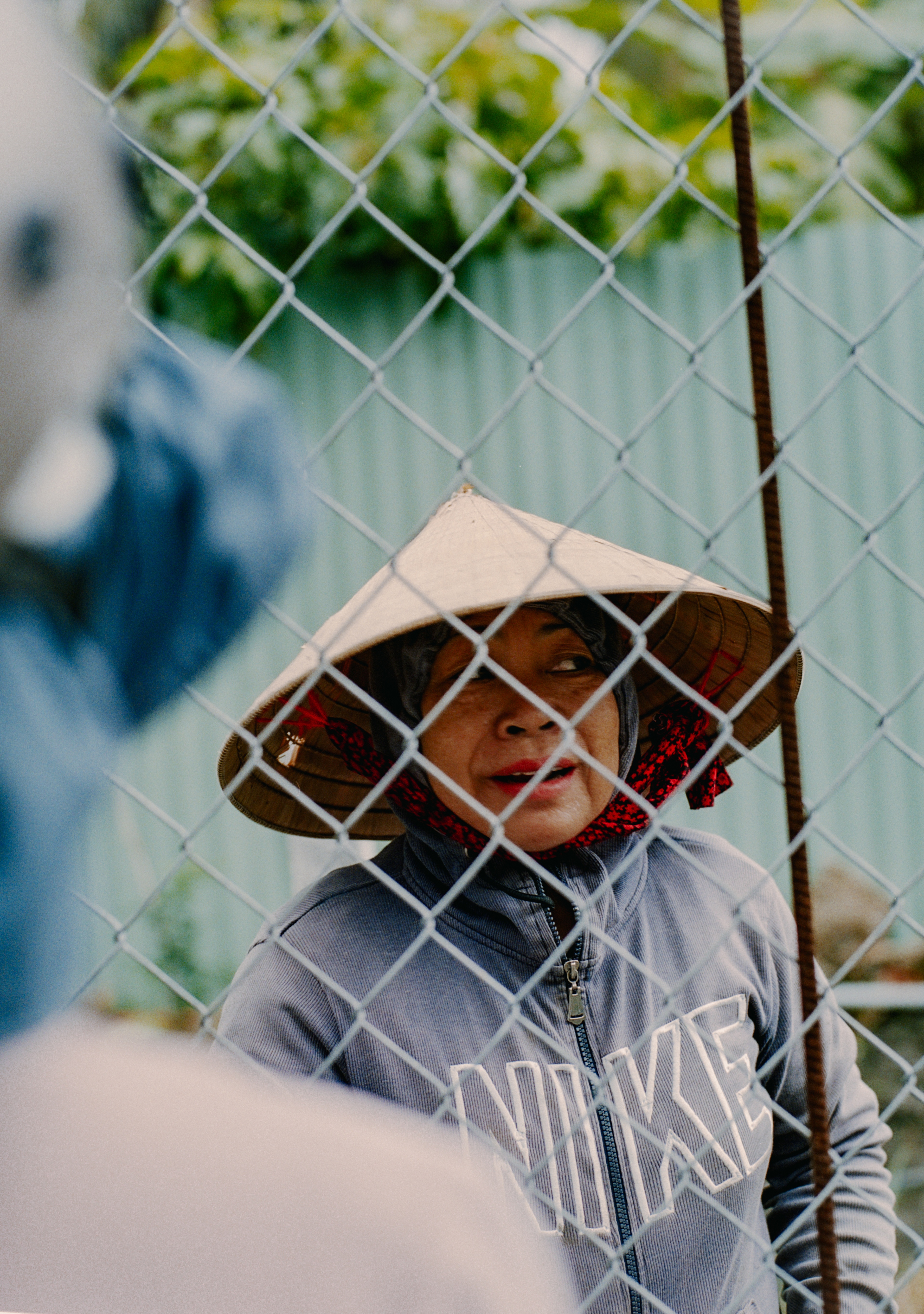
A neighbor.
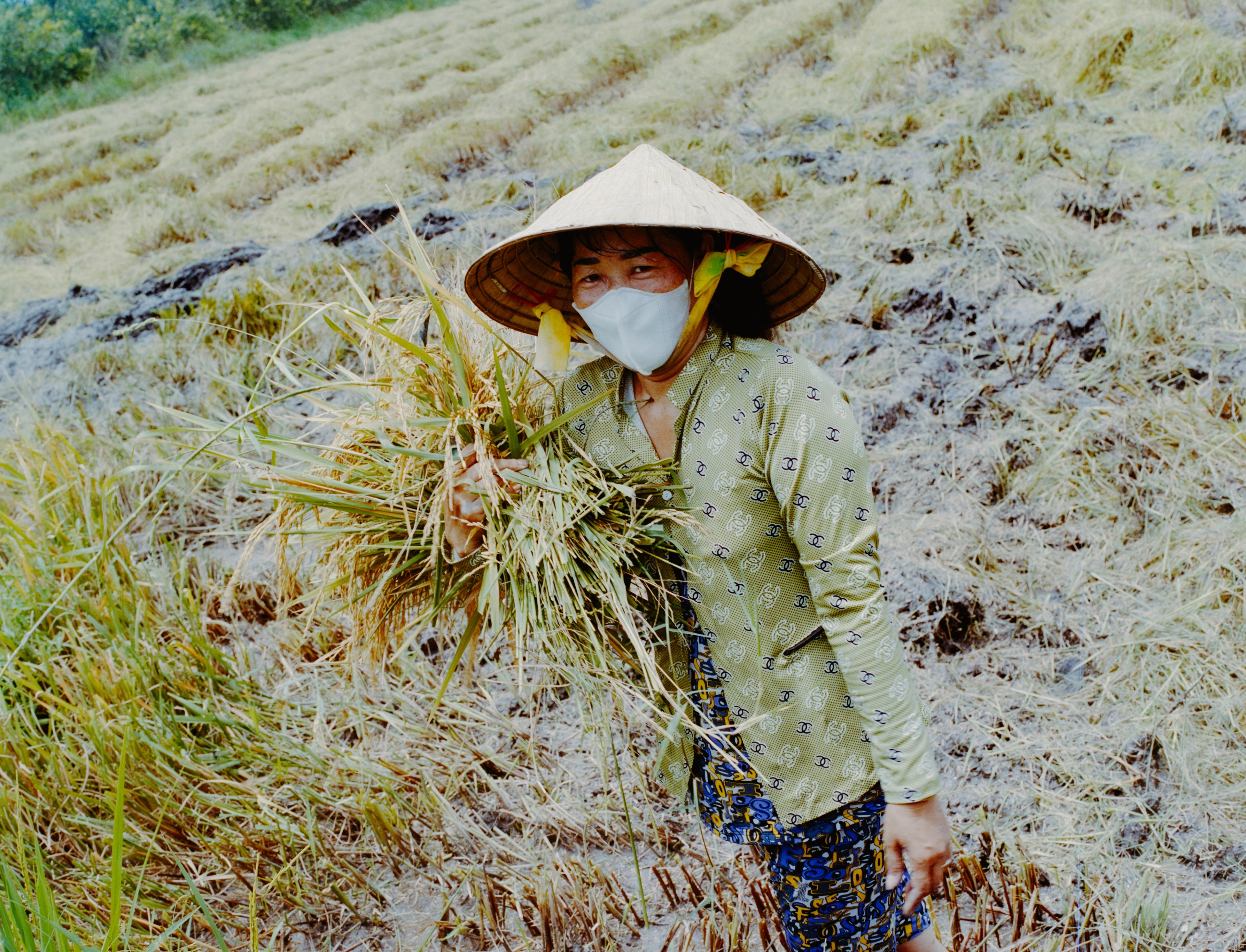
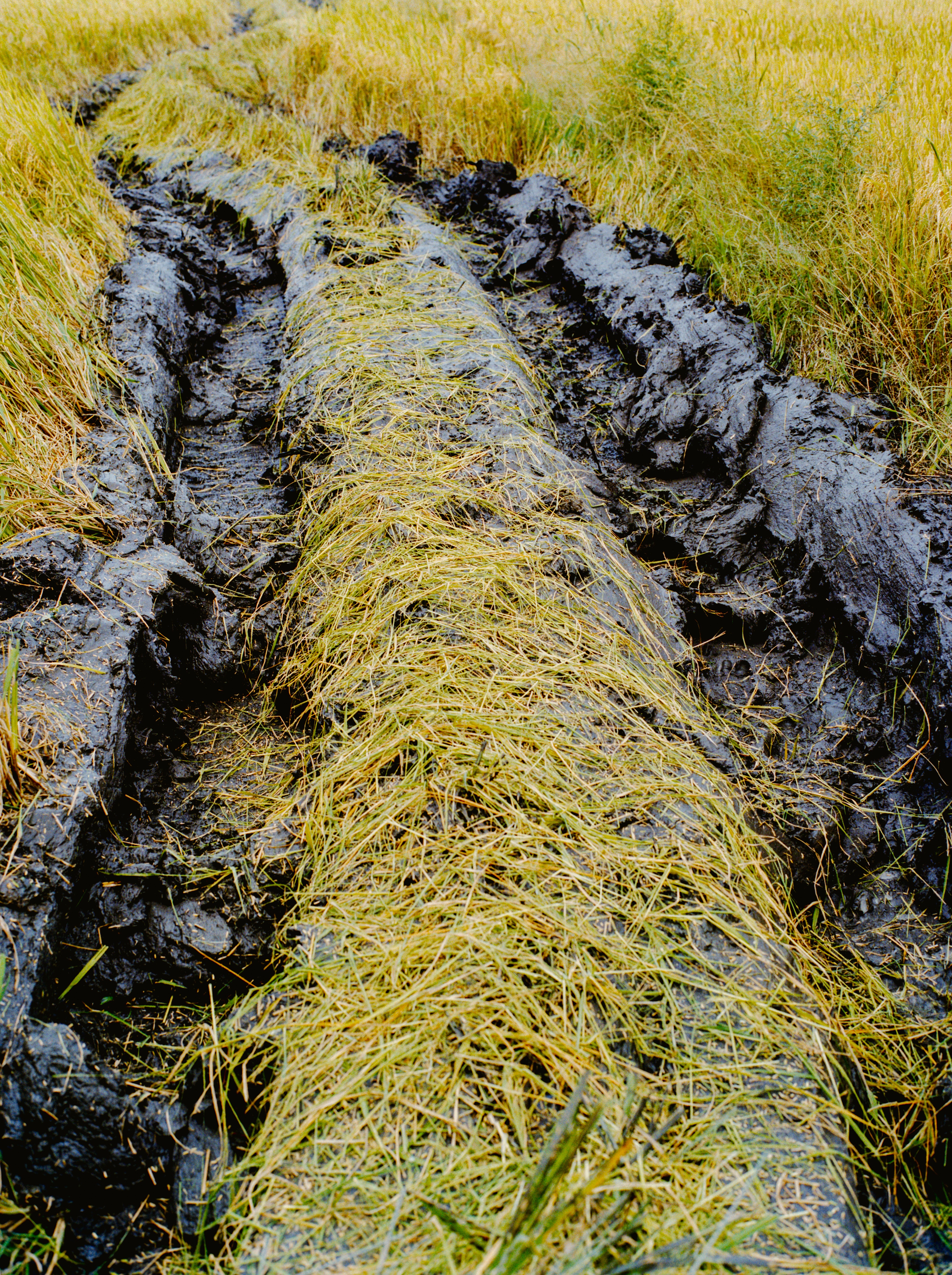
The rice fields being flooded in preparation for the next planting.
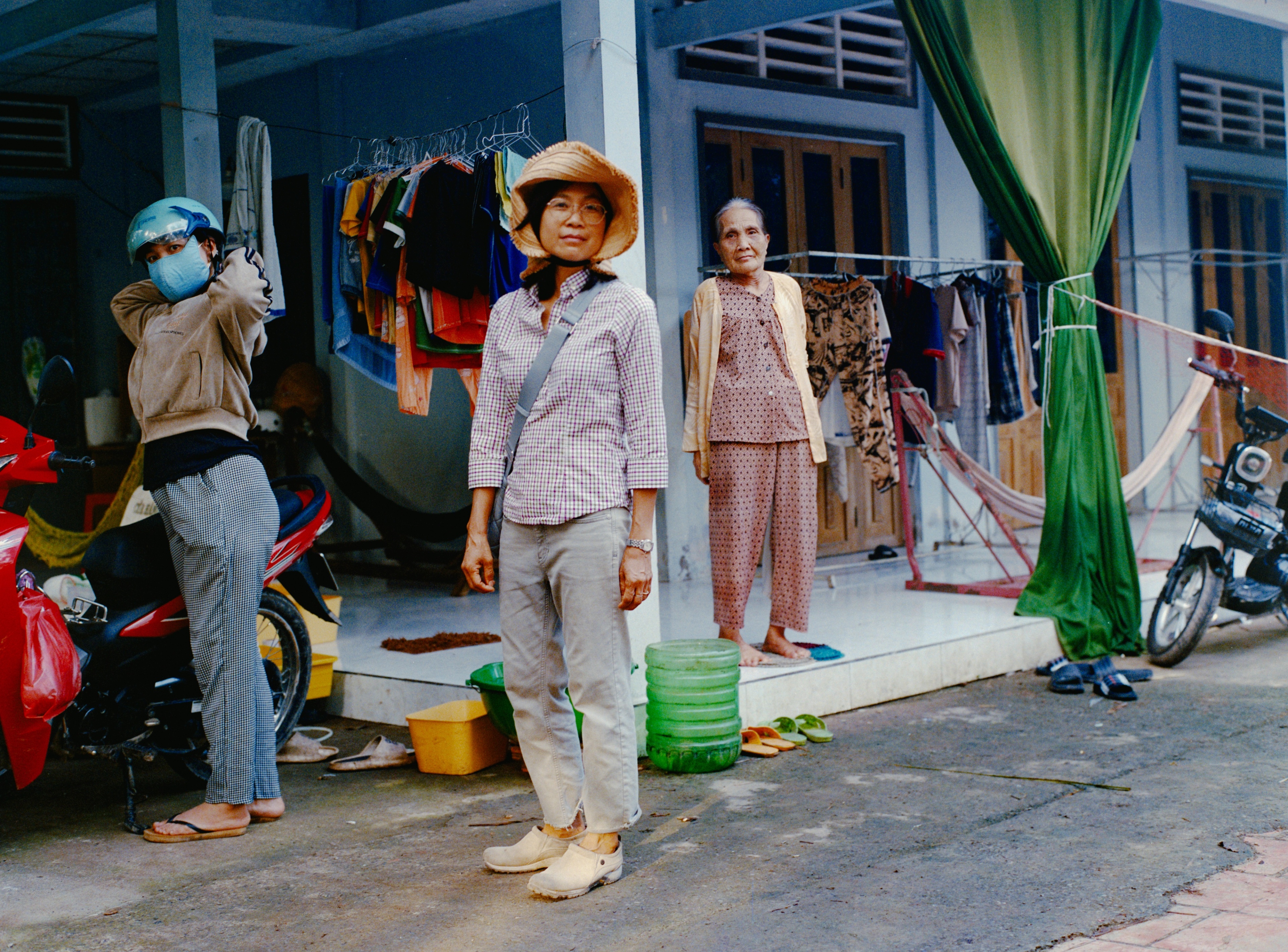
Thanh Xuan, my mom, and Dau Em’s mother in front of their home.
PHOTOGRAPHY
ELINOR KRY
Beyond Noise 2025
PHOTOGRAPHY
ELINOR KRY
Beyond Noise 2025
